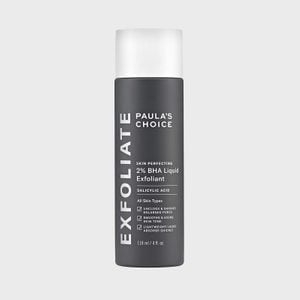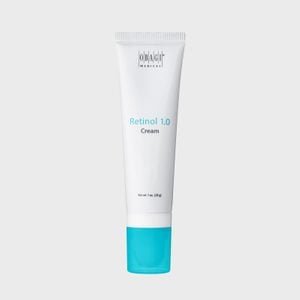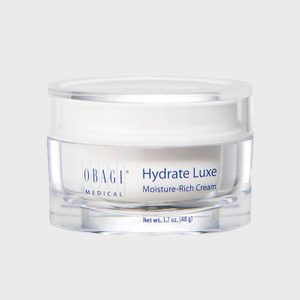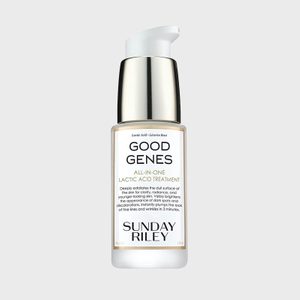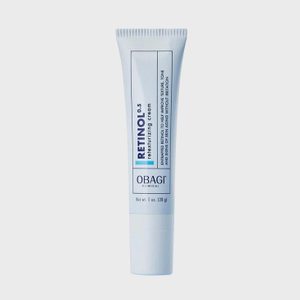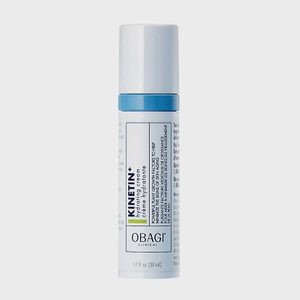What Is Skin Cycling—and Does It Work? We Tried the Viral TikTok Trend.
Updated: May 25, 2023

Trends come and go, but we tried skin cycling ourselves and found out it's so good, we're willing to bet it never goes out of style.
Our editors and experts handpick every product we feature. We may earn a commission from your purchases.Learn more.
I’m the first to admit that I have a love/hate relationship with TikTok. It’s a total time suck, but it’s also where I discover the most addictive viral beauty trends and products. I’ve tried skin slugging, hair slugging, GrandeLash Serum, face massage tools and Korean beauty products, all of which I love. So when skin cycling popped up on my feed, I was intrigued.
But as much as I love trying new trends, they rarely stick. Why? No particular reason other than the fact that I am exceedingly lazy when it comes to my skin. No matter how much I wish I had the patience for a full skin care routine, the truth is I really need simplicity—something like Proven Skincare’s easy three-step system. Otherwise, just give me a good face wash and moisturizer in the morning, an exfoliator and night cream for bedtime, and hopefully I’ll remember to use them every day.
To find out if skin cycling is just a fleeting fad, I spoke to board-certified dermatologist Elyse Love to learn all about the basics, including the benefits, how-to’s, and who should or shouldn’t partake in this beauty trend. If you’ve been curious about skin cycling and want to simplify your skin care routine, read on for everything you need to know.
What Is Skin Cycling?
If you’re like me and have a closet full of face serums, eye creams, anti-aging creams and other beauty “essentials,” then you know how overwhelming it can be to determine which products you actually need, when you should be using them, and how often you should be applying each one. Skin cycling takes away the guesswork.
Dr. Love explains, “Skin cycling is the behavior of cycling between hydrating, retinol and exfoliating products on a nightly basis. The classic cycle includes exfoliating products on the first night, retinol on night two, and then one or two hydrating nights to follow. This is then repeated in a cycle.” In other words, you’re giving your skin the benefit of strong, active ingredients for two nights and then giving it a chance to rest for one or two nights.
Why Is Skin Cycling Trending?
Although skin cycling has been making the rounds on TikTok (it currently has 179.2 million hashtag views), it’s actually not a new concept. Dr. Love credits its popularity to its creator, New York City dermatologist Dr. Wendy Bowe. Celebrity aesthetician Amy Peterson (known as the “Skincare Specialist to the Stars”) confirmed in a recent interview that skin cycling has been practiced by skincare professionals for years.
As for what makes it so popular, the answer is simple—it works. Dr. Love shared that she’s seen many people whose skin is over-exfoliated and overly-irritated from trying to use too many products at once. Skin cycling, she points out, is a way to use multiple skin care products in moderation.
How We Tested It
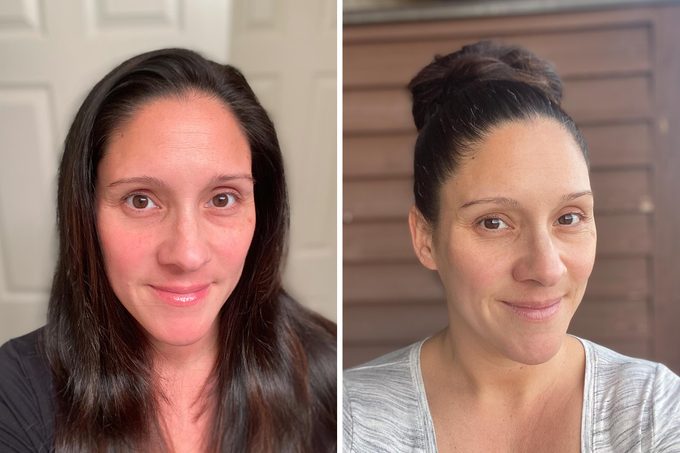
According to Dr. Love, there are three essential ingredients for skin cycling: a retinol, a hydrating cream and an exfoliant. If you have sensitive skin, Dr. Love advises using products that are designed for such. In fact, she says, “those with sensitive skin should not add a retinol and acid into their routine at the same time. They should start slow with alternating a gentle acid and a moisturizer, and then add the retinol into the routine when their skin is tolerating the acid reliably.”
I started by figuring out whether I wanted a three- or a four-day cycle. I have normal skin, so when Dr. Love explained you can have one or two hydrating nights, I knew I’d be fine with just one. However, after hours scouring Dr. Bowe’s Instagram page, I decided to follow her recommended four-day cycle. That meant day one is for exfoliation, day two is retinol, and days three and four are for rest and hydration.
On the first night, I washed my face with my regular cleanser and Foreo scrubber before using my go-to Paula’s Choice exfoliant. After that, I followed up with Obagi’s moisture-rich cream and hopped into bed. Yep! It was as simple as that! I don’t have sensitive skin and have been using this exfoliant for a while now, so I didn’t feel any burning, tingling or experience any irritation.
The next night you’re supposed to skip the exfoliant and apply retinol after cleansing. Dr. Love recommends Obagi’s 1.0 Retinol, or their Retinol 0.5 Retexturizing Cream if you are new to retinols or have sensitive skin. Once again, the routine was simple. I washed my face, applied my serum and followed up with moisturizer. I don’t typically use serum or retinol on my face because, again, I’m lazy, but I also didn’t experience any irritation.
The next two nights were uneventful. I washed my face and applied my moisturizer. The end. If you tend to use more products in your routine, then Dr. Love says go right ahead and continue using them. And if you’re like me and don’t use an array of different products, that’s okay too. I repeated this cycle for just over a month, and continue to do so, as Dr. Love points out that skin cycling is designed to be a long-term attitude towards skin care. Plus, it’s so simple that even I can keep up with it!
Pros
- Simple approach to skin care
- Prevents you from over-using strong actives, which can cause irritation
- Proven method practiced by skincare professionals for years
- Anyone can try it, no fancy or expensive purchases required
- Works with your existing hydrating products, or just the three essential items
Cons
- You can forget which day you’re on
- People with sensitive skin may find that it takes longer to see results as they have to start slowly
FAQs
Can you use your existing serums and eye creams while cycling?
Yes! “Skin cycling is a way to regulate how often potentially irritating actives are used on the skin,” says Dr. Love. Moisture-rich products such as hydrating serums and eye creams can remain in the routine daily as desired, she notes.
Will skin cycling address issues like dark circles, blemishes and uneven skin tone?
Skin cycling limits the use of use of acids and retinol and helps prevent over-exfoliating, which causes irritation. As a result, Dr. Love says you can expect to see an improvement in uneven skin tone, superficial blemishes and dullness of the skin.
When can you expect to see results from skin cycling?
According to Dr. Love, it takes, on average, six to eight weeks to see results with this skincare routine.
Is there anyone who should avoid skin cycling?
Dr. Love says that anyone can try skin cycling. That being said, those with sensitive skin should take a slower approach to incorporating actives. In an Instagram video, skin cycling creator Dr. Bowe advises those who are new to exfoliating serums or retinoids to start with just one. For example, exfoliate on the first night and spend the next three nights recovering. Repeat this cycle for two weeks before adding in your retinol.
What Other Experts Say
According to Dr. Bowe, there are more than four billion #skincycling hashtag views on Instagram. That means you’ll find no shortage of commentary on the viral method. If you want to be sure you’re getting it right, why not go straight to the source?
Dr. Bowe’s Instagram page is loaded with helpful clips that explain skin cycling in detail. You’ll find videos covering exfoliation night, retinol night and recovery night, along with loads of other helpful (and entertaining) information. You can also head over to her TikTok page for videos that cover topics like how long you should skin cycle, plus more professional tips on what to expect for each cycling night.
Final Verdict
I found skin cycling to be an easy way to incorporate actives into my everyday habits. I’ve tried retinol before, but never stuck with it since I wasn’t sure how often I should apply it. Some recommend daily use, others suggest every other day, and still others encourage something entirely different. It all depends on your skin and frankly, it was confusing. But once you find the best retinol serum for your skin, a quality exfoliant and a hydrating moisturizer, skin cycling is the easiest way to establish a routine that uses actives in moderation.
Skin cycling also prompted me to make another positive change to my daily groove. Since retinol and sunscreen go hand in hand, I’m much better about using a moisturizer with SPF each morning after applying a vitamin C serum. You can also apply a regular face sunscreen if you prefer.
Where To Buy Skin Cycling Products
Whether you need a moisturizer for acne-prone skin or a simple face serum, there are plenty of products on the market. I asked Dr. Love for her recommendations and suggested some of my own tried-and-true favorites. Some are easily found at Walmart and Target, while others require a virtual trip to Amazon or Dermstore.
If you have normal skin, try Paula’s Choice Skin Perfecting Liquid Exfoliant, Obagi Medical Retinol 1.0 and Obagi Medical Hydrate Luxe Moisture-Rich Cream. For sensitive skin, Dr. Love recommends Sunday Riley Good Genes Lactic Acid Serum, Obagi Clinical Retinol 0.5 Retexturizing Cream and Obagi Clinical Kinetin+ Hydrating Cream.
[/embed_section]
Source:
- Elyse Love, MD, FAAD, board-certified dermatologist





















